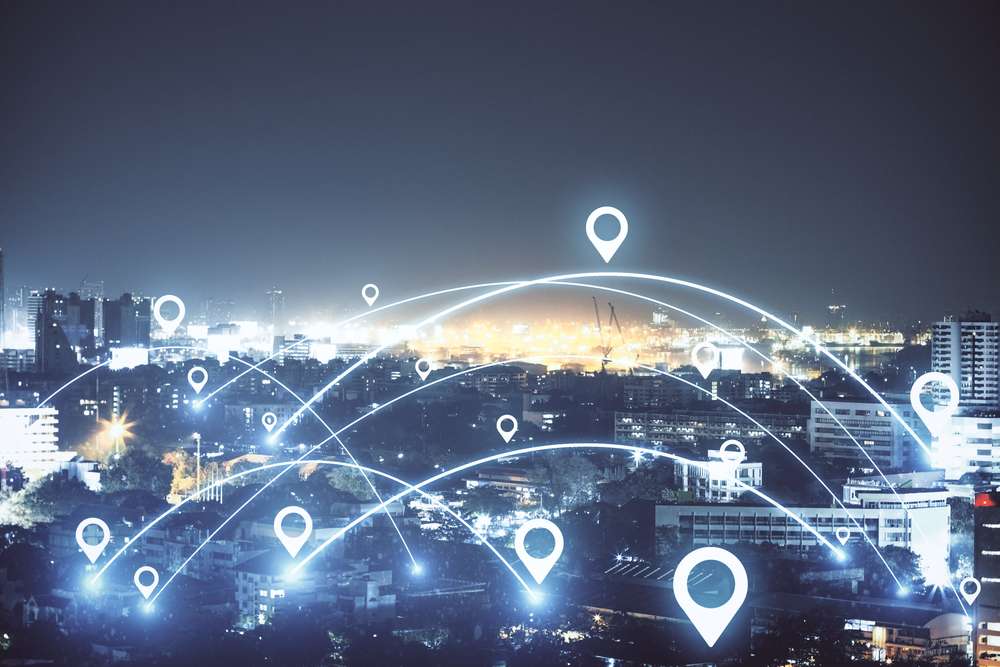
Introduction: Field-Based Learning and its Potential
Field-based learning, also known as experiential learning, extends the boundaries of a classroom by focusing on real-world experiences. This type of learning approach involves immersing students in a practical, interactive environment facilitating learning in real-world contexts. The philosophy behind field-based learning is learning by doing, thereby elevating the conceptual understanding and reinforcing the application of knowledge.
There is empirical evidence to show that students better remember what they have done compared to what they have heard or read. So, turning a conventional classroom into an engaging, interactive field enhances not just the empathy towards the subject but also boosts critical thinking, decision-making skills, and the ability to solve complex problems. Moreover, it provides students with physical experiences that may aid their mental processing.
One of the biggest potential advantages of field-based learning lies in its ability to make abstract concepts tangible and visible. From environmental science students testing water quality in a local river to sociology students observing and documenting local cultural events – the opportunities for field-based learning are numerous and offer practical implications.
However, the transformation from traditional learning to field-based learning does not come without challenges. Some of these challenges include the inability to manage in-person trips, logistic difficulties, and limitations on time and resources.
This is where the concept of geolocation comes to the fore. Arguably one of the most significant breakthroughs of the technological era, geolocation offers a resourceful way to implement field-based learning. Geolocation in education can be defined as the application of location-based services to facilitate learning in and about particular places.
The integration of geolocation into field-based learning opens up a plethora of possibilities for instructional design. It offers an innovative approach in bridging the gap between real and digital learning environments. With geolocation, learners are able to simulate experiences of being in a given geographic area and apply their learning in a meaningful context.
Geolocation tools can not only enhance the existing instructional design but also create new learning opportunities altogether, that were previously unexplored. It has the potential to transform and adapt instructional design according to the rapidly changing learning environments.
Beyond that, it offers scope to measure real-time engagement, understand learning behaviors, and gain insights into individual learning pathways. It prompts students to become active learners and allows them to take charge of their own learning journey.
In this article, we unveil the immense potential of geolocation in field-based learning. How embedding geolocation can improve traditional instruction design. Through practical case studies, insights into its implementation, trends, and predictions, we aim to present a comprehensive view of this innovative approach.
In investigating the potential of geolocation for field-based learning, we hope to equip instructional design professionals with the knowledge and understanding needed to integrate this technology into their teaching practices, and create rich learning experiences that extend beyond the traditional classroom boundaries.

Exploring Geolocation: A Tool for Learning
Geolocation is a technological tool that could revolutionize how we approach field-based learning and education as a whole. At its core, geolocation is the process of using a device’s GPS or IP address to identify the geographical coordinates of the device. With the rise of smartphones and tablets, geolocation has become an increasingly practical and accessible tool for both educators and learners.
Geolocation can turn any location into an interactive learning environment. Education no longer needs to be confined within the four walls of a classroom. With geolocation, the sphere of learning broadens to community spaces, cityscapes, historical landmarks, and even ecological zones. The entire world becomes an open book, ripe for exploration and learning.
Take, for example, a geography class studying tectonic plate movements. Instead of solely relying on textbook diagrams, a teacher could use geolocation-based applications to let students virtually visit different seismic activity zones around the globe. They could further interact with the data, visualize the plate boundaries, and make real-world connections to their theoretical knowledge.
Similarly, history classes can be enriched by virtually visiting historical sites via geolocation. Students can understand the spatial context of historical events, which can often be challenging to grasp, especially for events happening in distant locations.
In the field of environmental studies, geolocation can be instrumental in tracking migratory patterns, climate change, and the status of endangered species in real-time. Again, providing a tangible context to the theoretical knowledge.
Geolocation is a powerful tool because it enables context-rich, experiential learning. By integrating real-world examples into the conventional learning process, geolocation bridges the gap between theoretical and practical learning. It empowers students to go beyond rote memorization, encouraging them to make connections with the real world, to learn by doing, to question, and to explore. It fosters critical thinking, curiosity, and a deeper understanding of complex concepts.
Moreover, geolocation can also support personalized learning. As every location presents new learning potentials, learners can choose what they want to explore based on their interests or learning objectives. This level of autonomy will not only enhance their engagement but could also nurture lifelong learning habits.
While the potential of geolocation in learning is immense, it is crucial to understand that it’s merely a tool. A tool is only as effective as its user’s proficiency. Therefore, educators and instructional designers have a crucial role in designing effective, geolocation-based learning experiences. By understanding the strengths and limitations of this tool, they can leverage geolocation to elevate field-based education to new heights. The upcoming chapters will delve into this topic in more detail, exploring how to integrate geolocation into instructional design.

Crossing the Boundary: Transition from Traditional to Field-Based Learning
Shifting from a traditional, often times static learning environment to a more dynamic, field-based learning approach necessitates a clear understanding of its potential advantages and the foresight to navigate its unique challenges.
In traditional classrooms, learning is generally confined by the four walls of a classroom, and insightful teaching experience is necessary for effective information delivery and absorption. Teachers lecture and provide real-life examples to elucidate concepts which students then internalize, digest and reproduce during assessments. However, their concept of the ‘real world’ is usually limited to those experienced vicariously through teachers, textbooks, or multimedia.
Crossing this boundary to field-based learning, we embark on a path where the environment becomes an active participant in the learning process. Imagine a scenario where instead of learning through second-hand experiences or multimedia channels, students learn directly from the source. Geolocation makes this possible.
Field-based learning through geolocation hinges on the premise of expanding learning beyond the claustrophobic confines of classrooms. This approach relies heavily on experiential learning, wherein students actively engage with the physical environment around them to learn and consolidate concepts. For instance, instead of learning about the history of a city through a textbook, a geolocation-based field trip allows students to explore historic sites themselves, receive information through an application about the points of interest and perhaps even interact with it.
However, this transition is not without its trials. A predominant challenge in this transitory phase is the professional development for educators to competently handle geolocation technology. Since most educators come from a generation where learning was classroom and textbook-centric, using geolocation for teaching might be out of their comfort zone. In such situations, proper training and guidance to navigate the technology is critical. Similarly, managing and ensuring the safety of students during field-based lessons is another concern that needs to be addressed effectively.
Moreover, the integration of technology and field-based learning needs to be a delicate balance. Over-reliance on technology can potentially undermine the physical aspect of field-based learning. The key is to use geolocation as a tool to enhance experiential learning rather than a means to replace it entirely.
Nonetheless, these challenges do not outweigh the transformative potential geolocation portends for education. By focusing on teacher readiness and systematic integration of technology with curricula, field-based learning can become a prevalent way of high-impact, immersion-based education.
Transitioning from traditional to field-based learning, fundamentally driven by geolocation, will arguably require commitment and trial-and-error. However, the reward, in terms of student engagement, understanding, and readiness for future technological advancements, makes it a worthwhile change.
As educators delve into the world of geolocation-aided field-learning, they inexorably pave the way for a more engaging, inclusive, and effective learning environment that dares to cross the boundaries of traditional pedagogical methodologies.

Leveraging Technology: Embedding Geolocation in Instructional Design
Field-based learning allows students to obtain hands-on, practical information about the physical environment much closer than a traditional classroom. And with the advent of geolocation technology, the emphasis on field-based learning has evolved greatly. Geolocation – the identification or estimation of the real-world geographic location of an object – now plays a key role in instructional design, allowing educators and learners to connect more freely with the world around them.
Now, how does one integrate such technology into their curricula effectively? The answer lies in understanding the fruition of geolocation tools and leveraging them to create immersive learning environments.
Geolocation tools, like GPS-enabled devices, have revolutionized how we navigate our world. These tools are just as useful for providing learners precise geographical coordinates, but they can also provide contextual data about that location, such as cultural information, biodata, historical facts, and more. Such data can create a narrative and forge an emotional connection, enriching the learning process and making it more meaningful.
Instructional designers can embrace geolocation technology in several ways. One practical application is the creation of learning trails. Educators can pre-plan specific routes, employing geographic points as prompts for tasks, discussions or investigations. These trails can be multi-disciplinary, integrating subject matters like Science, History, and Geography, encouraging students to interact physically and intellectually with their surroundings.
Another powerful application of geolocation is in augmented reality (AR). AR overlays the real world with digital information enhancing field-learning. Students can use AR applications on smartphones or tablets to interact with the historical or physical phenomena at their specific locations, merging the digital and the physical realities for a more enriched learning experience.
Gamification, another strategy, uses geolocation technology to turn learning into a game-like experience. Applications such as ‘Minecraft: Education Edition’ encourage students to construct and explore virtual worlds, fostering engagement and facilitating an understanding of complex subjects. Other games, like ‘Pokémon Go,’ if tweaked slightly, could be harnessed to create an exploratory learning experience based on the real-world environment.
Moreover, geolocation technology can pair with data recording and visualization tools for scientific field studies. Students can gather data at multiple points within a field site, then visualize and interpret their observations.
However, as we integrate geolocation applications into instructional design, we must remember that effective learning is not just about using the latest technologies; the pedagogical goals must take center stage. The instructional designer’s role is to build meaningful learning experiences by thoughtfully embedding geolocation tools into a curriculum, ensuring they augment the learning objectives, instead of becoming a distraction.
In the current tech led world, the possibilities for ‘real-world’ education through geolocation are limitless. It marks a shift from a simple ‘show and tell’ approach to a ‘navigate, explore and comprehend’ teaching strategy. By taking advantage of geolocation tools, instructional designers can create powerful, engaging, and immersive learning experiences that extend beyond traditional learning boundaries.

Practical Applications: Case Studies of Geolocation in Field-Based Learning
Geolocation technology presents vast possibilities for real-world, field-based learning, as these case studies demonstrate.
Case Study 1: Backyard Biologists
In an elementary school in Wisconsin, USA, a 5th-grade science teacher introduced her students to the world of biology through a geolocation app. The app gave students the coordinates of various types of trees within their school grounds. The students then used these coordinates to locate the trees, take photos, and research their classification, life cycle, and any symbiotic relationships with insects or other trees. The activity nurtured a deeper understanding of botany, ecology, and geology, enriching the students’ educational experience beyond the classroom walls.
Case Study 2: History Through Geocaching
At a high school in Australia, a history teacher launched an innovative approach to explore Australian history using geocaching, a high-tech treasure hunting game using GPS-enabled devices. The hidden items or “caches” were symbolic representations or artifacts related to historic events or figures. Finding a cache unlocked a piece of history, allowing the students to immerse themselves in the past in a fun, engaging way. They explored themes such as colonization, independence, indigenous cultures, and historical landmarks. They also developed team-building and problem-solving skills during the process.
Case Study 3: Urban Planning and Architecture
At an Italian university, urban planning and architecture students used geolocation apps to compare and contrast different styles of buildings in various Italian cities. Their professors created a digital map of architectural landmarks, each tagged with geo-coordinates. The students visited each site, analyzed architectural styles, and assessed the urban context. Back in the classroom, they used their field data to draw up their own architectural designs and urban planning projects.
Case Study 4: Environmental Science
Environmental science students at a UK university were asked to measure the impact of pollution in several river bodies as part of their course. Using geolocation data, students collected samples at pointed coordinates, analyzed them, and reported their findings. In turn, they understood the real-world effects of pollution, adding practical applications to their theoretical knowledge.
In conclusion, these case studies show how geolocation can take education beyond the four walls of the classroom, using real-world settings as dynamic and interactive learning environments. This application of geolocation technology to field-based learning gives educators the ability to design engaging, immersive, and hands-on educational experiences, generating excitement and deep understanding among students.

Challenges and Solutions: Implementing Geolocation in Educational Settings
Implementing geolocation in an educational setting presents a myriad of challenges and barriers. While the overarching goal of creating an engaging and immersive learning experience using geolocation is exciting, the journey is often fraught with technical, logistical, and pedagogical challenges. This chapter explores these challenges in greater depth, before presenting several possible solutions and strategies to overcome them.
A primary challenge lies in the realm of technology. For geolocation-based learning to work successfully, both teachers and students need access to reliable technology and internet connectivity. Additionally, not all locations are GPS friendly, often resulting in inaccurate data. Furthermore, the intricacies of geolocation software and applications may also serve as a prohibitive factor, demanding a level of technical proficiency that not all educators or students possess.
Another key challenge is the incorporation of geolocation in pedagogy. While it may serve to enhance learning by transforming it into an interactive experience, it might also unwittingly act as a distraction. There is a delicate balance to achieve where the use of technology does not stray too far from the learning objectives.
In addition to this, logistical and safety issues cannot be overstated. Field trips that leverage geolocation technologies demand a higher degree of planning and monitoring to ensure that all participants are safe, further increasing the logistical workload.
Despite these challenges, there are several solutions as educators can take to effectively incorporate geolocation into their instruction.
In terms of technical challenges, training programs can be put in place to familiarize teachers and students with the technology. For locations where GPS signals are weak, supplementary orientation tools can be utilized. Designers can also engineer the applications to be more user-friendly.
To address pedagogical concerns, careful curriculum planning is indispensable. By incorporating geolocation tasks that align with the learning objectives, educators can utilize this tool without distracting from the educational content. Moreover, the development of structured guides and instructions can help to keep the focus on learning rather than the novelty of the technology.
Lastly, to mitigate logistical and safety concerns, sufficient planning and communication with all parties involved are necessary. Implementing protocols for safety, maintaining regular contact, and establishing clear boundaries are steps educators can take to make the learning experience productive and safe.
While integrating geolocation in field-based learning may pose challenges, overcoming these obstacles provides an opportunity for us to rethink and reshape our educational practices. The value of geolocation as a tool for immersive learning has the potential to outweigh the difficulties, as long as it is approached with a clear understanding of both its challenges and its promises. Ultimately, reaching beyond boundaries to explore new ways of teaching and learning is a core pursuit of educational advancement.

Future of Geolocation: Trends and Predictions in Field-Based Learning
Geolocation technology has become increasingly critical in the education sector, especially in the realm of field-based learning. The advancement of technology has broadened the possibilities for immersive, experiential learning experiences. This chapter explores the potential future trends and implications of geolocation in field-based learning.
Let’s start with the concept of personalized learning. In the future, geolocation could allow educational experiences to be tailored to each individual student’s geographical context, taking into account cultural, historical, environmental, and socio-economic factors. For example, a student in an urban area might learn about architecture or urban planning whilst a student in a rural area might focus on agriculture or ecology.
Augmented Reality (AR) provides another avenue for the application of geolocation in field-based learning. AR layers digital information over the physical world, making it possible for students to interact with educational content in real time and in a physical context. Combining AR and geolocation could result in transformative learning experiences where, for example, historical events are recreated on the actual site where they occurred.
Next, consider the emergence of smart cities, where interconnected technologies provide real-time data about various aspects of urban life. For educational programs focusing on urban planning, geography, and related fields, the future could see geolocation used in conjunction with smart city data, enabling a real-time, interactive study of urban dynamics.
In terms of addressing educational inclusivity and equality, geolocation has the potential to make field-based learning accessible to those in remote or rural areas who have traditionally been underserved by educational opportunities. Online learning platforms could utilize geolocation to deliver appropriately contextualized content to these regions, thereby democratizing access to field-based learning.
However, along with these exciting advancements, challenges are likely to arise. Issues of privacy and data security will need to be prioritized. Furthermore, there may be significant infrastructural and technological demands associated with implementing geolocation-based learning systems, including the need for robust internet connectivity and the provision of suitable devices.
In conclusion, the future of geolocation in field-based learning holds immense potential to make education more immersive, inclusive, and linked with the real world. In developing and integrating these technologies, education professionals will need to navigate associated hurdles. But the potential rewards – motivated students, improved learning outcomes, and graduates ready for the jobs and challenges of the future – make these efforts worthwhile.
As instructional designers, we should take advantage of geolocation technologies, remaining open to adaptation and innovation. Being equipped with a good understanding of the potentials and challenges of geolocation in field-based learning can help us guide our learners into uncharted educational territories. The future of learning is not just in classrooms or online—it’s out there in the field!

Conclusion: Strengthening Instructional Design through Geolocation
The advent of digital technology and the integration of geolocation into instructional design marks a pioneering step towards innovative, interactive, and immersive learning. Moving beyond the constraints of traditional classrooms, field-based learning facilitated by geolocation practices opens up a new world of pedagogical opportunities. This transformation has reshaped the landscape of education by fostering a deeper understanding and personal connection with taught material, a fact that has been keenly observed through the previous chapters.
The primary purpose of instructional design is to create effective, appealing, and engaging learning experiences. Geolocation has taken this a step further by adding an element of spatial awareness and experiential learning, thereby ensuring a richer and more contextual understanding of the subject at hand. Implementing geolocation-based learning aids learner engagement, information retention, and practical application of knowledge.
The practical applications and case studies explored in the previous sections shed considerable light on the advantages of geolocation in education. They depict the successful integration of technology in field-based learning and how it can revolutionize current pedagogical practices. From enhancing learners’ problem-solving abilities to fostering better team collaboration and facilitating a direct interaction with learning materials, the benefits of geolocation are manifold and significant.
However, venturing into this new realm also presents its share of challenges. Issues such as technical difficulties, data privacy concerns, and the need for robust training require careful thought and innovative solutions. Inclusive access to technology also remains a critical concern. Yet, these obstacles are not insurmountable. Through well-planned strategies, rigorous instructional design, and ongoing technological advancements, we could witness a smoother transition towards this revolutionary learning approach.
The foreseeable future of geolocation in field-based education looks promising. With the rapid advancements in technology and digital connectivity, the scope for implementing geolocation will only continue to expand. As instructional design professionals, we have the opportunity to ride this wave of change and contribute to a learning ecosystem that thrives on innovation, interaction, and continuous learning.
In conclusion, the integration of geolocation in instructional design opens a new chapter in the realm of field-based learning. Its potential is enormous and largely untapped. As instructional design professionals, our mission should be to embrace this technology, understand its potential, navigate its challenges, and utilize its capabilities to enhance and enrich the learning experiences we offer.
This article is available in multiple languages:
Field-based Learning through Geolocation
Feldbasiertes Lernen durch Geolokalisierung
Apprentissage sur le Terrain grâce à la Géolocalisation
Aprendizaje Basado en el Campo a través de la Geolocalización
Apprendimento Basato sul Campo attraverso la Geolocalizzazione
Aprendizado Baseado em Campo através da Geolocalização
Veldgebaseerd Leren door Geolocatie
Навчання на місцевості через Геолокацію
Uczenie się w Terenie poprzez Geolokalizację
Fältbaserat Lärande genom Geolokalisering
Feltbasert Læring gjennom Geolokasjon
Feltbaseret Læring gennem Geolokation